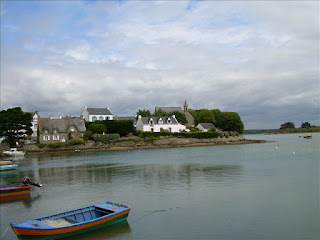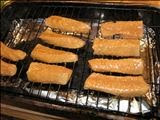Hope you all had a wonderful Christmas with great food and wine amongst family and friends. We celebrated on the night of the 24th with a classic Danish menu starting with gravlax, a home cured salmon from the medieval tradition of burying the salmon in dillweed under the sand for 7 tides to cross!;the main course included roast duck with caramel potatoes and red cabbage. The dessert was a "duvet cooked" rice in vanilla & cream! Christmas Day dinner was simply guail & grapes in a morel & mushroom port sauce simply delicious.
We are now busy preparing dinner for tomorrow night and the menu is as follows:
Starters
Plater of Cancale Oysters and Prawns
***
Warm smoked salmon with carrot & horseradish salad
***
Scallops in puff pastry with a curry Sauternes sauce
***
Granitee of mulled wine
Main Course
Mushroom stuffed chicken with salsify
***
Selection of cheeses
***
Dessert
Panna cotta on an bed of orange salad
I have planned to include a few surprises in between these dishes and one will be a brussel sprout dish as I have just collected my first crop from the garden and intend to use them! I found a nice recipe from an old cook book which once belonged to the Danish Prime Minister's chef back in 1932. It is for a "rose cabbage soup" and is nicely typed up on government headed paper so that will be interesting and bound to go down a storm when it is served to party revelers at around 0200 hours on New year's day! Have a great party everyone.

























